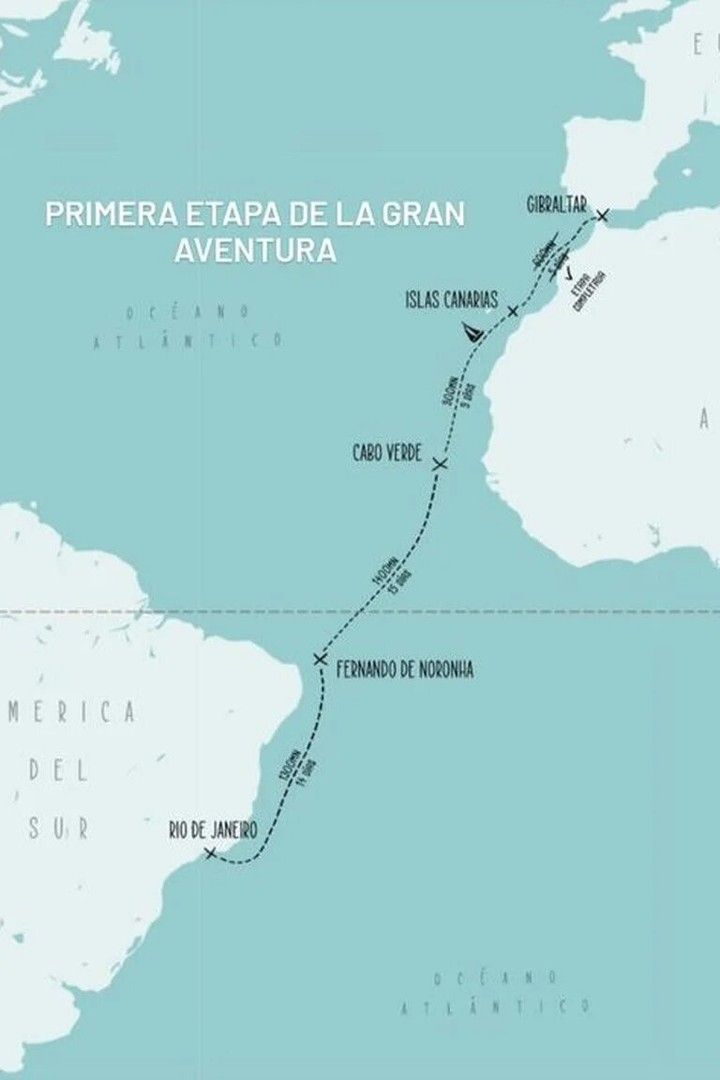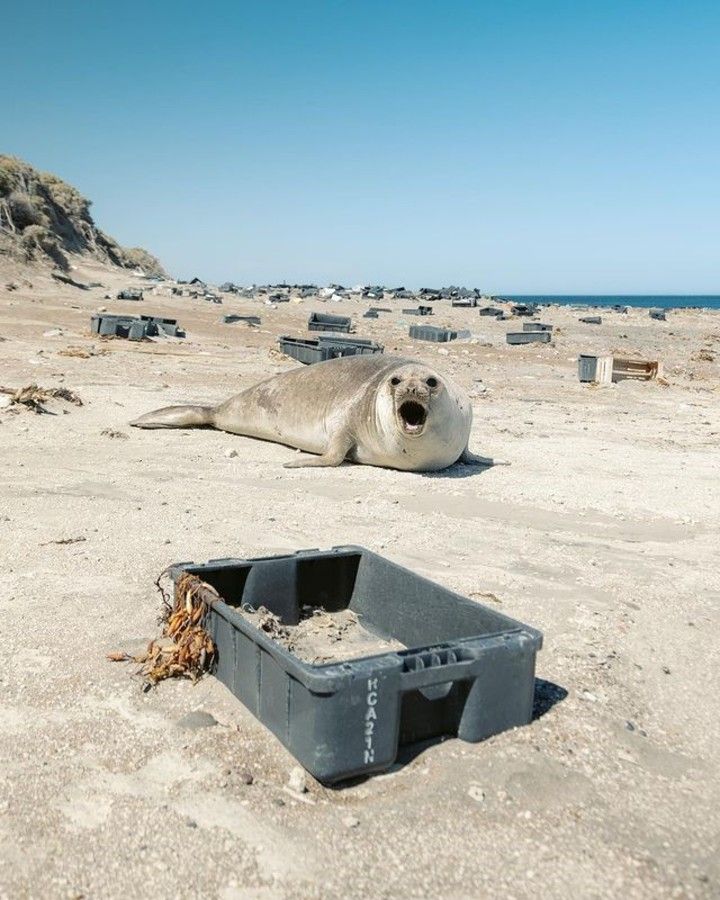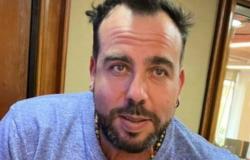“It is because of the sea, because of the beauty of the world, because of what is not seen and has to be known and has to be cared for,” says Juana Viale who is far from everything. Far from the TV host. Far from the flat ground of the cities. She is seen via video call, calmed by the heat, she looks like a woman from the tropics. Next to her is Yago Lange, her partner, environmental activist, navigator. They launched themselves into the ocean, into the most immense of ecosystems and have just crossed the equator.
They come from Cape Verde heading towards Fernando de Noronha, northern Brazil. Then Rio. Then Buenos Aires. But now for several days they have only seen blue of all ranges, water and horizon, clouds that take on fantastic shapes, a sky that opens and closes, a temporary sky, electrical storms, eternal calms like centuries. They ration food – “the fruits are gone,” they say -, they take contamination samples. Juana shows the bottle they use to take samples of microplastics. The trip is part of a project that will take them across various seas, around the world. “Across all the seas”, Juana assures.
They see the beauty and they also see the threat. They have seen nylon bags, pieces of plastic tables floating, they see the garbage that stalks the pristine. It is a unique and philosophical experience, they insist. It is more than a journey of activism. It is a proposal that aims to show what the majority does not see. “It is difficult to take care of what is not seen. Think about the importance of creating protected areas. But also moor in towns, on coasts and talk about what those who do face the sea experience,” Juana tells Clarion. They are in the true heart of the world, contrary to the city life of someone who interviews them from a desk in Buenos Aires.
In the conversation, then, as the sailboat Lola moves forward with its five crew members, the topic of plastic arises.
An urgent and global debate
Every 7 days, we eat a credit card. It is not a metaphor, but the totality of the imperceptible plastic lost in food that lurks and penetrates our body without us knowing it. The data is not new, but it is historical. In 2019, a study by the University of Newcastle revealed that people are consuming around 21 grams of plastic per month, just over 250 grams per year. “This is the same as shredding a card and eating it every week,” the experts wrote.
This image was needed, perhaps, so that the alert about a material that survives, promotes climate change and plagues biodiversity would lead to a serious debate, which requires political and scientific intervention and of a call to global consciousness.
Another report, from February 2022, indicates that by 2040 the plastic in the oceans It will weigh more than all the fish combined. The Environmental Investigation Agency (EIA), a UK NGO, assures that “the toxic pollution resulting from the rampant overproduction of virgin plastics and their life cycles is irreversible, directly undermines our health, drives the loss of biodiversity, exacerbates climate change and the risks of generating large-scale environmental damage.”
With these background data, the fourth round of negotiations for a T is taking place this week.World meeting on the use and production of Plastics (INC-4) in Ottawa, Canada.
Academics and scientific bodies have published documents and studies aimed at informing delegates and policy makers about the health impacts of chemical and plastic pollution. They release alarming data: at least 1.8 million premature deaths a year, neurodevelopmental disorders, diabetes, chronic respiratory diseases, cancer. It is urgent, they say, to reach a turning point in large-scale industrial plastic production. But they fear for the time it may take to achieve it.
In March 2022, the United Nations Assembly resolved to develop a binding international instrument on plastic pollution. The Intergovernmental Negotiation Committee (INC) began its work in the second half of 2022, with the ambition to conclude negotiations by the end of this year.
Now, a coalition of governments described as “high ambition”, led by Rwanda and Norway, hopes eradicate plastic pollution by 2040 with a treaty that guarantees interventions throughout the entire life cycle of plastics, including the reduction of production and the ban of some chemicals used in the plastics industry.
Those in the know ask not to ignore the relationship between plastic production and climate change. “Plastic pollution is an environmental, climate and health problem,” explains Periodistas por el Planeta. Plastic is made almost exclusively from fossil fuels, primarily crude oil, but also coal. “Plastic production represents 3.4% of global greenhouse gas emissions.” And they warn: “The oil and gas industry plans to significantly increase production, and considers the production of petrochemicals and plastics as a means to maintain oil demand.”
Plastic is everywhere. Their waste becomes visible, in the best of cases, and completely imperceptible in the majority. Microplastics and nanoplastics are a serious problem for all marine species. It is increasingly common to find traces of these particles in the digestive tract, even of the fish that humans eat. These are data that everyone, in the broad arc of environmentalism and science, knows. But there is a need to create awareness of the higher problem.
The journey continues
Far from the debates and statistics, but very aware of them, Viale, Lange and their team exhibit a calm that is proof of anything. They are gentle and you can see that they are moved by the experience. They are inside nature.
 The route of Viale and his partner.
The route of Viale and his partner. The team that crosses the Sea.
The team that crosses the Sea.Lange followed in the footsteps of his father, Olympic medalist Santiago Lange. He got tired of seeing polluted water while he sailed. He left the sport and became an activist. One day, while sailing along the coast of Chubut, he arrived at Tova Island and found a colony of sea lions chewing their cud among plastic boxes discarded from fishing boats. Those photos went around the world. They were an alarm and a call. Since then, Lange hasn’t stopped.
 Iago Lange. Instagram photo.
Iago Lange. Instagram photo. Plastic fishing boxes among elephant seals.
Plastic fishing boxes among elephant seals. The path crossed him with Juana Viale. Beyond her popularity as a driver, Mirtha Legrand’s granddaughter has always been committed to different environmental causes. Lange and Viale took to the sea with a team of filmmakers. A documentary of his odyssey will be released. But they humbly aspire to more: to an extended consciousness, to a shared calling. “This is deeper than the issue of plastic,” says Lange, “is to leave behind the aimless debates and revalue what we have, to be able to live it and replicate it and try to ensure that everyone can feel this same thing.” Ottawa discussions are needed. But also explorations and trips like that of Lange, Viale and their team. In the debate over the climate and the planet, everything adds up because it is always late. You always run from behind.











